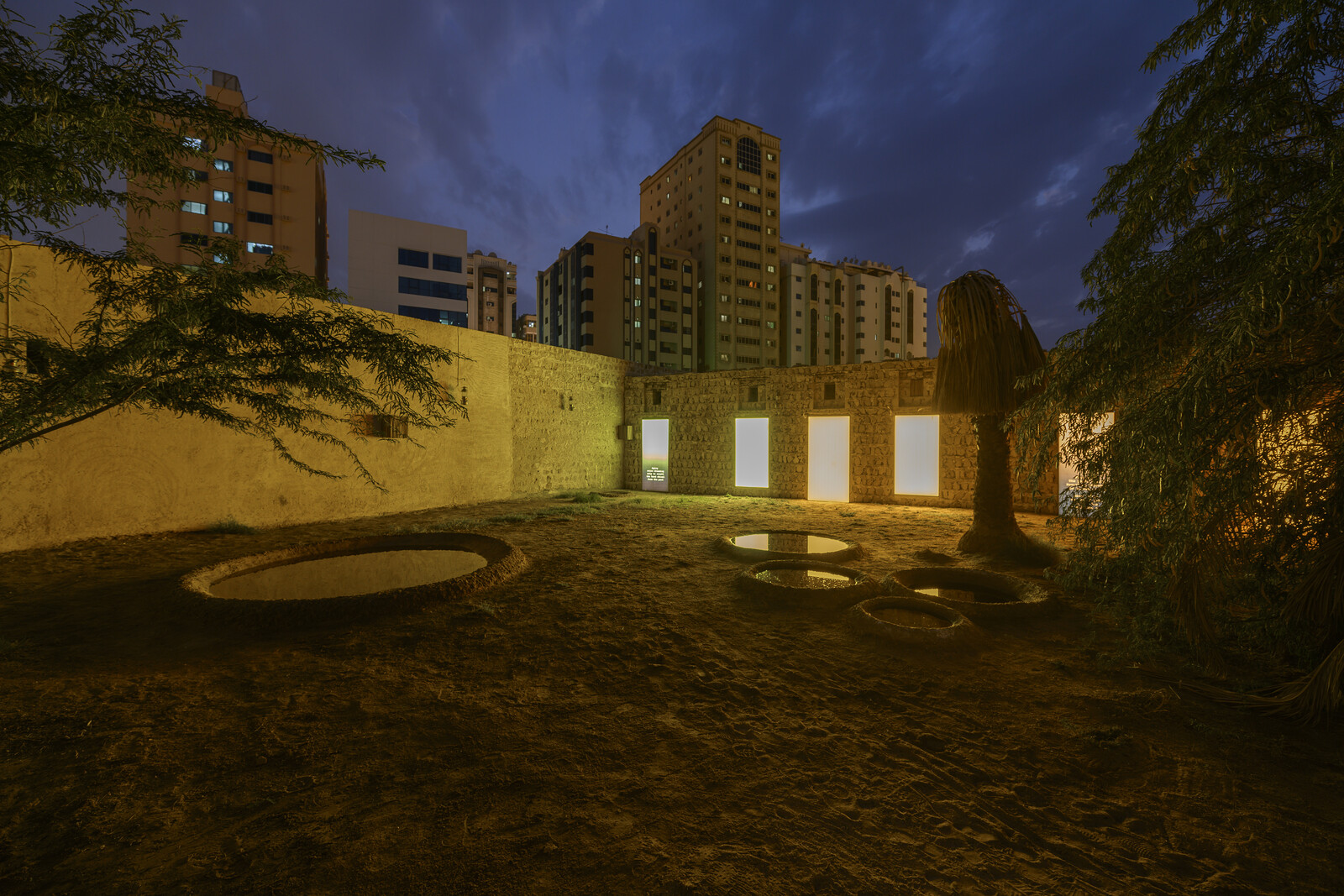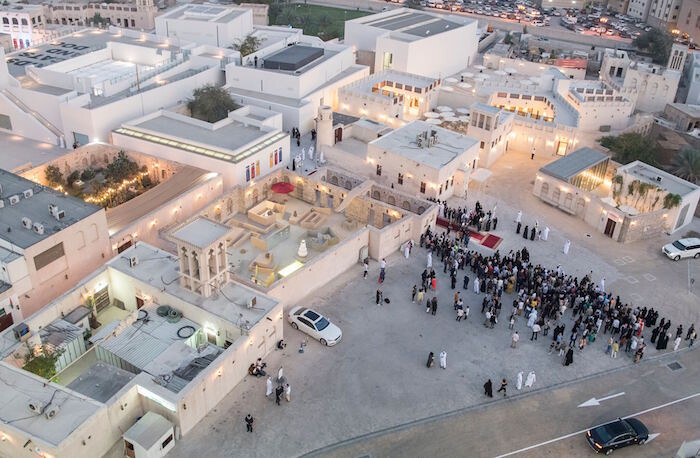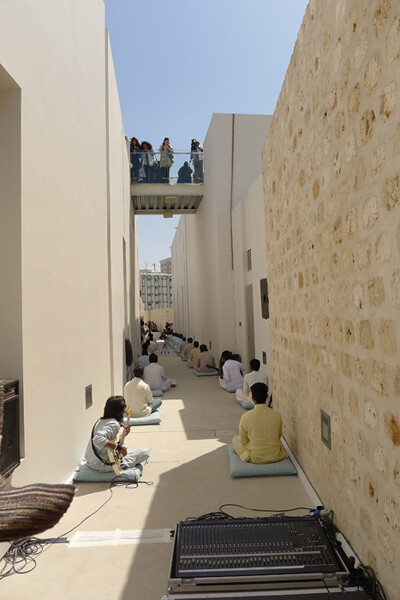Categories
Subjects
Authors
Artists
Venues
Locations
Calendar
Filter
Done
February 21, 2023 – Review
Sharjah Biennial 15, “Thinking Historically in the Present”
Ben Eastham

On her first visit to Africa in the early 1970s, Angela Davis was surprised to find her speeches interrupted by dancing. Being pulled from the lectern whenever an idea moved her audience showed the philosopher and activist, she tells filmmaker Manthia Diawara in a work commissioned for the fifteenth edition of the Sharjah Biennial, how damaging is the western separation of intellectual speculation from embodied action. She proposes art as the form through which these two expressions of human freedom are reconciled. How it might do so is the question that haunts this sprawling exhibition of over 150 artists “conceived” by the late Okwui Enwezor and curated by Hoor Al Qasimi.
The difficulty is encapsulated by Diawara’s Angela Davis: A World of Greater Freedom (2023), which joins incendiary footage of Nina Simone singing “Mississippi Goddam” (1964) to Davis’s testament that the song did more to mobilize resistance than a thousand books. Simone’s performance leaves no room to doubt it, but the black box in which the film is screened leaves no space in which to dance it. Similarly, Bouchra Khalili’s The Circle (2023) combines accounts of the campaigns by which French-Arab workers asserted their rights in the early 1970s with …
March 18, 2019 – Review
Sharjah Biennial 14: “Leaving the Echo Chamber”
Melissa Gronlund

What was reading life like before the “echo chamber,” the term for the bubble in which one’s own biases are rehearsed and confirmed by other like-minded people? It was not as dominated by single subjects, probably a bit calmer, more demanding in terms of homework and criticality, and with the odd issue you’d want to pass by. The Sharjah Biennial 14—titled “Leaving the Echo Chamber” and put together by Zoe Butt, Omar Kholeif, and Claire Tancons, each of whom has curated their own section—doesn’t have much to do with algorithms, the singularity, or other advances from digital technology. Despite itself, due to the diversity of geographical regions and formal types of work overseen by its curatorial trifecta, this is a biennial with surprises, broad scope, and solid curation.
Disembodiment is a key theme throughout Kholeif’s section, “Making New Time,” which is anchored in a strong historical painting show in the Sharjah Art Museum and a more politically driven display at Bait Al Serkal. The painting exhibition opens on the geometric works of Anwar Jalal Shemza, a modernist artist who worked in Lahore, and moves toward formal dissolution: from the Turkish artist Semiha Berksoy’s scratchily rendered figures to the thick …
March 16, 2017 – Review
Sharjah Biennial 13: Tamawuj
Melissa Gronlund

Bottles of seawater sit among makeshift red flags on charred concrete breezeblocks. “It’s like a fire,” says the artist, Dineo Seshee Bopape, of her installation, +/– 1791 (monument to the haitian revolution 1791) (2017), which is scattered about the courtyard of one of Sharjah Art Foundation’s warren of spaces. Small black lumps, formed by molding wet clay in the artist’s fist, are arranged in neat rows; piles of herbs are scattered about. The centerpiece of the courtyard—the fire-like construction—refers to the idea that the Haitian Revolution was brought on by the curse of a Voodoo priestess; the water, herbs, circles and votives elsewhere call on other faith systems of Africa and the African diaspora. Seawater is often said to have healing properties, while fuel can “release the spirit from bondage,” as Bopape puts it. The work is a depiction, and perhaps a performance, of spiritual opposition.
Indigenous belief systems, cybernetics, herbal remedies, Sufi meditations, and proto-monetary methods of exchange abound in Christine Tohmé’s Sharjah Biennial 13, titled “Tamawuj,” an Arabic word meaning a swelling or a rise. The exhibition is laid out across the Sharjah Art Foundation spaces in the center of Sharjah, in a few locations refurbished by the foundation …
March 14, 2013 – Review
"Re:emerge, Towards a New Cultural Cartography," Sharjah Biennial 11
Antonia Alampi

A Qawwali song in Urdu fills one of the narrow lanes of the new Sharjah Art Foundation spaces. It has been interpreted by a group of about thirty Pakistani musicians, sitting on the floor, while art professionals arrived en masse for the most anticipated event in the region. The music is a part of Dictums 10:120 (2013), a new work by Wael Shawky, one of the many new commissions by the Sharjah Art Foundation, which deals with what we might call the art-world language, that strange sub-species of English which, despite its universal ambitions, often ends up acquiring a solipsistic tone. But that’s just one of the many idiosyncrasies of the contemporary art world that are here subtly evoked. The composition—in Urdu, the most commonly spoken local language, also intelligible to those who speak Hindi—is the result of a reflection, discussion, and reconstruction of the curatorial statement by the workers of the biennial itself.
Here, on the other side of exclusion, for once, the Pakistanis are the only ones to have linguistic access to the work, gaining “authority for a time,” as the artist himself affirms. The almost ghostly role and position of visibility and invisibility of the workers is also …